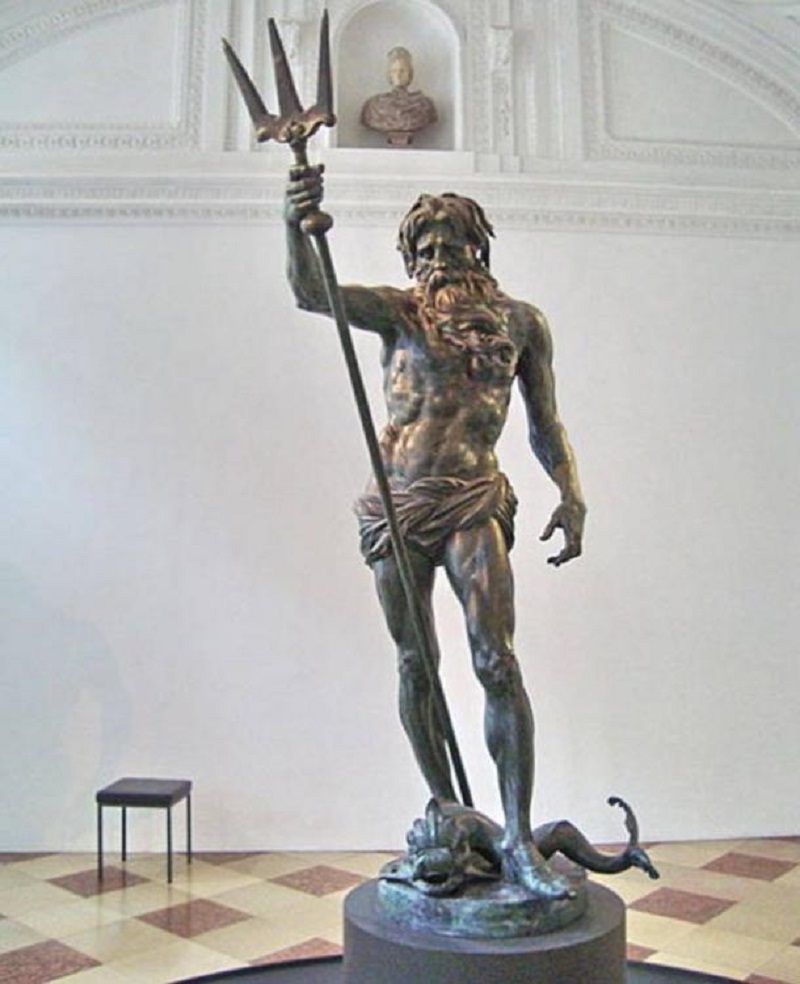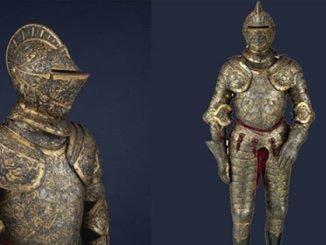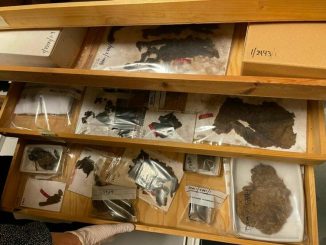The story of the destruction of Atlantis is one of the most famous stories from ancient Greece. However, there is a similar story of destruction told about the city of Helike. However, unlike Atlantis, there is much more written about this site. Furthermore, these writings also contain clues that help archaeologists search for the true location of the city. Using these clues, archaeologists were finally able to find the lost city.
Helike is located in Achaea, northwest of the Peloponnesian Peninsula. During his heyday, Helike was the leader of the First Achaean League, a confederation of 12 cities in the surrounding area. Due to this location, Helike is an important economic, cultural and religious center. Helike’s power could also be seen in the colonies it founded, such as Sybaris in southern Italy and Priene in Asia Minor.

A coin from Helike. Front: Head of Poseidon; Reverse: Trident. Photo source: ww2.smb.museum.
Helike’s patron god is Poseidon, the Greek god of the sea and earthquakes. This is not surprising given Helike’s location in one of the strongest earthquake zones in Europe. The cult of Poseidon can be seen in the temple and sanctuary of Helikonian Poseidon, a bronze statue of Poseidon, and coins with the god’s head on the reverse and a trident on the reverse.
Helike’s patron god is Poseidon (right). ‘The Marriage of Poseidon and Amphitrite’ by Felice Giani (Wikimedia Commons)
One winter night in 373 BC, the city of Helike was wiped out. Several signs of the city’s impending doom have been recorded, including the appearance of ‘giant pillars of fire’ and the mass migration of small animals from the coast to the mountains over several days before the disaster. A massive earthquake, followed by a massive tsunami from the Gulf of Corinth, wiped the city of Helike off the face of the earth. The rescue team arrived the next morning and found no survivors.
Helike’s destruction is believed to have been caused by Poseidon. According to the stories, the sea god was angry with the inhabitants of Helike due to their refusal to give the statue of Poseidon or even its model to the Ionian colonists from Asia. Some accounts even claim that Ionian representatives were murdered. As a result, Poseidon punished the inhabitants of Helike by causing the sea to swallow the city, very similar to what happened to Atlantis.
According to legend, Poseidon created a great wave that swallowed the city of Helike (Wikimedia Commons)
However, unlike Atlantis, Helike was not completely lost as it was visited by tourists in the following centuries. The philosopher Eratosthenes, who visited the site 150 years after its destruction, wrote that there was a standing bronze statue of Poseidon submerged in a ‘poros’ and was a danger to fishermen’s nets. The Greek traveler Pausanias also visited the site and wrote that the walls of the ancient city were still visible underwater, although they had by then been much eroded by salt water. The ancient Romans also liked to sail past this location because they could admire the city’s statues. However, Helike’s location has been lost over time.
Bronze statue of Poseidon, possibly similar to the one seen at Helike. (Wikimedia Commons)
Although speculation about Helike’s true location began in the early 19th century, it was not until the late 20th century that Helike was rediscovered. Because Helike is a submerged city, its location is one of the great mysteries of underwater archeology. However, the very belief that this city was hidden somewhere in the Gulf of Corinth made its discovery impossible. In 1988, Greek archaeologist Dora Katsonopoulou raised the possibility that the ‘poros’ mentioned in ancient texts may not have referred to the sea but to an inland lagoon. If so, it is possible that Helike is not in the Gulf of Corinth but inland, as the lagoon has been silted up over millennia by river sediments. Although the team found a Roman city as well as an Early Bronze Age settlement, it was not until 2001 that the team found Helike in Achaea, Greece. In 2012, the destruction layer was discovered, which confirmed that the site was indeed Helike.
Although the city of Helike has been rediscovered, excavations are still underway in the area. This is important because the area was settled by many different groups of people and through the discovery of settlements from different historical periods, a more complete picture can be created. about the region, from prehistoric times to the modern period. . After all, amazing though the story of Helike may be, it is just one point in a long series of events spanning millennia.





